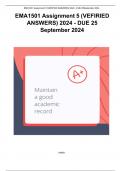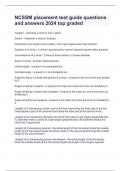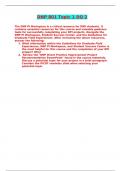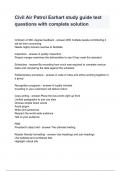Exam (elaborations)
EMA1501 Assignment 5 (VEFIRIED ANSWERS) 2024 - DUE 25 September 2024
- Course
- Emergent Mathematics
- Institution
- University Of South Africa
Find study guide for EMA1501 Assignment 5 (VEFIRIED ANSWERS) 2024 - DUE 25 September 2024 100% satisfaction guarantee QUESTION 1: PRE-NUMBER CONCEPTS (25) Read the statement below and answer the questions that follow. From birth already, children are exposed to mathematical concepts and activitie...
[Show more]








